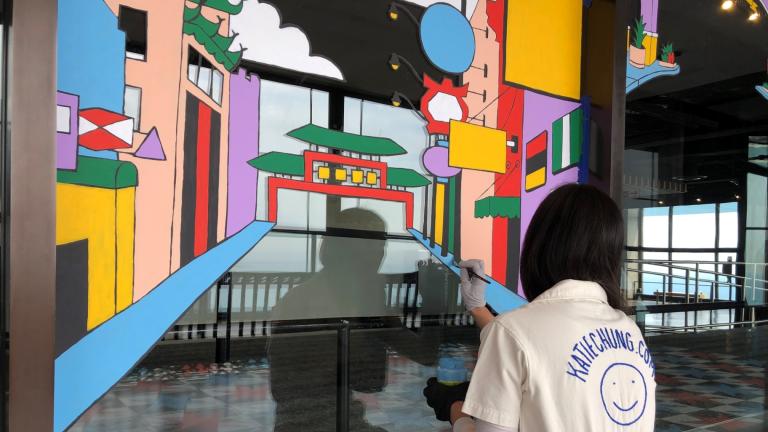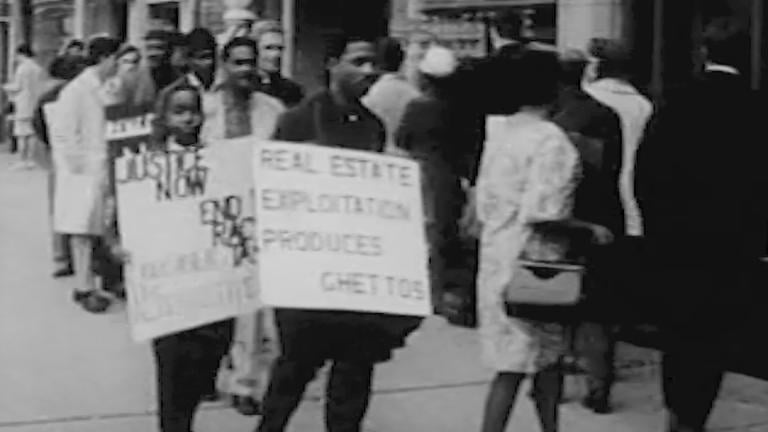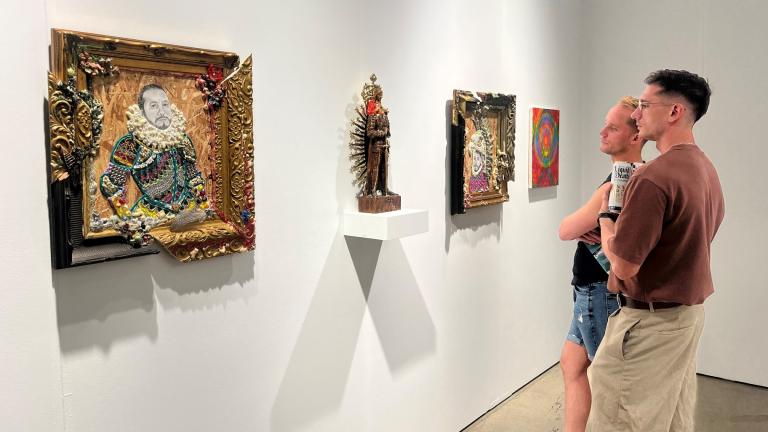When your hobby turns into one of the most comprehensive collections of movie posters in the world, what do you do for an encore? A local collector once had 45,000 posters and lobby cards. He sold some, donated others, and kept the cream of the crop.
TRANSCRIPT
Marc Vitali: From a gigantic Spanish poster for the Alfred Hitchcock classic “North by Northwest”…
…to a rarity that features Oswald the Lucky Rabbit – the prototype for Mickey Mouse…
…and enough lobby cards to fill the lobbies of a hundred movie theaters.
It’s a collection from the Golden Age of the Silver Screen, when colorful movie posters made lasting first impressions.
Dwight Cleveland, Collector / Preservationist: 100% the ad budget was put into the posters, and they hired important artists, and they had graphic art departments that put these together. It is the first thing people see, certainly back in the day when films first evolved, it was the only form of advertising. This was meant to grab you by the lapels and say ‘get in this movie theater and see this film.’
Vitali: Dwight Cleveland has had a passion for posters and lobby cards since the 1970s. He has work from 56 countries.
Cleveland: Back when a lot of these posters were done, the way the distribution worked in foreign countries — and I do own a lot of foreign posters because I feel like they have superior graphics — a foreign artist would have designed the poster. So you’d see different artwork on the domestic poster than you saw on the foreign poster. But today the campaigns are kind of global, so if you go to even another country, you’ll see this exact same artwork that you’ll see here at the movie theater so it’s really not as interesting to me.
Vitali: His collection was the focus of a book, “Cinema on Paper,” with an introduction by Ben Mankiewicz of Turner Classic Movies.
Cleveland: I collect differently from most collectors, who collect by film genre, or particular movie star, director, things like that. I fell in love with the posters first and the artwork, and then I learned to love the movies after that. So everything that I own I love from an artistic standpoint.
It’s difficult to define in words. It’s more of a visceral reaction I get when I see something, and I just know that I have to own it. It just speaks out to me and says ‘Take me home.”
Vitali: He began his collection as a teenager with the lobby card for “Wolf Song,” an early sound film with Gary Cooper and Lupe Velez.
A high school teacher was also a collector and asked him to hunt down posters on his “want list.”
Cleveland: In the course of hunting things on his list, I fell in love with other posters and just kind of became hooked, and it’s been my drug of choice ever since.
Vitali: He continued collecting through a career renovating historic Chicago
homes. He handles movie history with the same care.
Cleveland: I started out as a collector then learned about restoration, archiving, cataloging and all of that stuff, and now I’ve transitioned into more of an advocate in terms of elevating the art form.
Vitali: Cleveland reduced his cinematic stockpile with donations to the Library of Congress, the Academy of Motion Picture Arts and Sciences, and other institutions.
His collection is currently the basis of an exhibition on the role of women in early film history at the Poster House Museum in New York City.
His advice to aspiring collectors?
Cleveland: I guess the best advice I can give is just buy what you love. I mean, that’s what I’ve done, and everything has kind of fallen into place. I think when you try to buy artwork and meet the market and treat it as an investment it’s really a difficult task, and it’s not something that I’d want to take on. So just buy what you love and be very thorough and understand the concept of ‘caveat emptor.’ It’s very important in auctions and when dealing with dealers.
Vitali: Now with a smaller collection, he’s eyeing its future.
Cleveland: Most of what I own is one of a kind or just a few known, so it’s very difficult to price something like this, but I would love to see it in an institution that will treat it properly and make it available for film scholars and the general public, and how that happens I don’t know yet but I’m certainly taking calls on that.
More on this story: There’s more from collector Dwight Cleveland including his book, “Cinema on Paper.” And if you find yourself in New York City, his exhibition “Women in Early Hollywood” is open at the Poster House Museum until October 9.








